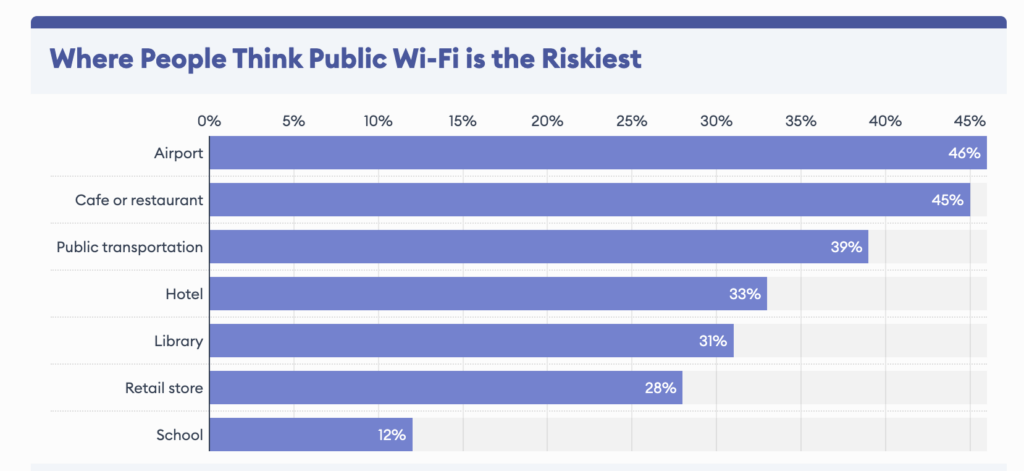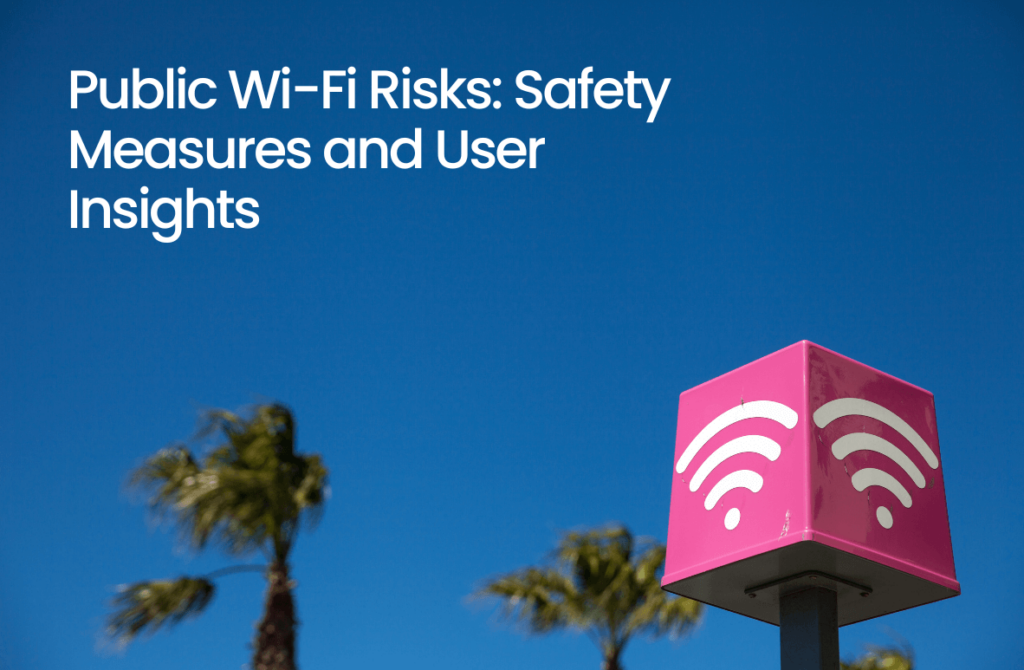Public Wi-Fi is easily accessible, offering convenience but also potential security risks. Many people rely on public Wi-Fi for internet access while on the go. It’s important to be aware of the dangers and take steps to protect your personal information. Studies have found that 40% of individuals have had their data compromised while using public Wi-Fi. This article will delve into the risks of public Wi-Fi, common places where it’s used, and tips for keeping your data secure.
Why Do People Use Public Wi-Fi?
Our recent study shows a variety of reasons for people resorting to public Wi-Fi, from lack of cell connections to international travel, social media browsing, and video streaming. This indicates a high dependence on these networks, irrespective of whether the activities are for leisure or work. However, the practice of using public Wi-Fi for sensitive information, such as financial transactions, comes with its own risks.
Where Is Public Wi-Fi Used the Most?
Public Wi-Fi is frequently accessed in locations like cafes, hotels, and libraries. It’s also commonly used in airports, indicating potentially risky periods when travelers might be accessing confidential details. The study also highlighted retail stores and schools as popular Wi-Fi spots, reflecting an increasing dependency on public Wi-Fi in different settings.
Perceptions of Public Wi-Fi Safety
Public opinion about the safety of public Wi-Fi is varied, indicating the need for more awareness about potential risks and how to secure personal data when using these networks. A concerning percentage of users are uncertain about the safety of public Wi-Fi, indicating the necessity for more resources and information to help users make informed decisions about their network choices.
Balancing Convenience and Security
Many users, prioritizing convenience, connect to public Wi-Fi networks without passwords. However, these networks tend to be less secure, potentially exposing users to hackers who exploit public Wi-Fi to harvest private data. Users must weigh their need for convenience against their need for security when deciding which public Wi-Fi networks to use.
Perceived Riskiest Places to Use Public Wi-Fi
According to the survey, users perceived hotels, airports, and cafes as riskiest for using public Wi-Fi. Conversely, schools were seen as comparatively low-risk locations. The responses underline the necessity for users to remain alert about their online security, regardless of their connection location.

Security Compromises on Public Wi-Fi
Public Wi-Fi can often be unsecured, providing an opportunity for hackers to steal personal information or deploy malicious software. The most effective protection when using public Wi-Fi is to ensure a secured network with encryption, strong device passwords, and potentially using a virtual private network (VPN).
Role of VPN in Public Wi-Fi Usage
VPNs, which encrypt all data transferred between the device and router, are used by 40% of survey respondents while on public Wi-Fi. The remaining users either underestimate the risks or find VPNs inconvenient. This data indicates the need for educating users on safe practices when using public Wi-Fi.
Role of Businesses in Ensuring Public Wi-Fi Security
Businesses can contribute to protecting their patrons by implementing stringent security measures, including firewalls and encryption protocols. They can also help users by keeping their networks updated with the latest security patches and providing instructions on safe browsing while connected.
Concluding Thoughts
While public Wi-Fi offers widespread convenience, it carries potential risks that can threaten personal and business information. As reliance on public Wi-Fi grows, understanding its risks and adopting protective measures becomes crucial. Our survey indicates a high percentage of users have experienced security compromises while on public Wi-Fi. Considering these risks, it’s worth exploring the use of VPNs to secure internet traffic and safeguard personal data.
